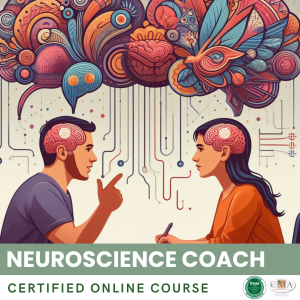The history of LGBTQ+ activism is rich and diverse, made up of collective struggles and individual commitments to recognition and equal rights. While the pioneering movements of the 1960s-1970s laid the foundation for this activism, as we saw in the previous sub-module, it has consistently evolved and reinvented itself over the decades, adapting to new challenges and integrating new voices.
A major turning point was the emergence of AIDS activism in the 1980s. Faced with the inaction of public authorities and the stigmatization of affected individuals, associations such as Act Up (founded in 1987 in New York, then in 1989 in Paris) developed radical and spectacular modes of action, such as die-ins, zaps or occupations of premises. Their slogan “Silence = Death” summarizes their philosophy: Breaking the silence imposed on the sick, denouncing discrimination, demanding prevention and care policies. This activism led to major advances, such as accelerating access to treatment, but also a greater awareness of the extent of the epidemic and increased solidarity with HIV-positive individuals.
In the 1990s-2000s, LGBTQ+ activism diversified and specialized, with the emergence of associations focused on specific issues or audiences. For example, the November 6 Group, created in 1996 to defend the rights of trans people, or the Pink Panthers, a queer and anti-capitalist collective active in the 2000s. Associations such as SOS Homophobia or Refuge have specialized in helping victims of violence and family rejection. Others, like AIDS or AIDS Info Service, have developed local support for people affected by HIV. This specialization reflects a willingness to take into account the diversity of experiences and needs within the LGBTQ+ communities.
Another notable feature is the proliferation of Prides or Pride Marches around the world. As mentioned in the previous sub-module, these marches are both a moment of celebration, visibility and political demand. They gather an increasingly wide and diverse audience, far beyond just the LGBTQ+ communities. In many countries, they have become a must to show support for the cause of equality. But they also crystallize debates about the institutionalization of the movement, its depoliticization or its commercialization, some activists denouncing a form of “pinkwashing” and calling for more radical and intersectional forms of activism.
Because a major challenge for contemporary LGBTQ+ activism is intersectionality, i.e., taking into account the multiple forms of domination and discrimination that intersect. Movements like the Combahee River Collective, a collective of black lesbians founded in 1974 in Boston, have early theorized the interlocking oppressions of gender, race and class. But it is especially since the 2000s that this approach has spread, driven notably by black feminists like Kimberlé Crenshaw or bell hooks. More and more LGBTQ+ collectives thus identify with anti-racism, anti-capitalism, feminism or even ecology, and seek to articulate these fights in a perspective of global emancipation.
This intersectionality is also reflected in an increased focus on issues of representation and inclusivity within LGBTQ+ movements. Associations like ACCEPTESS-T or Outrans fight for better consideration of racialized and/or migrant trans people, often invisible or even excluded from mainstream activist spaces. The Irrecoverables collective advocates for the inclusion of LGBTQ+ people with disabilities. This involves deconstructing a monolithic and normative vision of LGBTQ+ identities and making room for all voices and all experiences in their complexity and contradictions.
Finally, contemporary LGBTQ+ activism is characterized by an increasing use of digital tools and social networks. Hashtags like MeTooGay or MeTooInceste have helped to break the silence about sexual violence within the LGBTQ+ communities. Instagram accounts like @LGBTQIArchives or @QueerMuseum contribute to memory work and transmission of the history of struggles. Apps like Grindr or Hornet become spaces of prevention and information about sexual health. Digital technology offers new opportunities for mobilization, visibility and creating links, but also involves risks of exclusion, harassment or data exploitation that need to be taken into account.
As historian Antoine Idier points out, “LGBTQ+ movements have always been traversed by debates, conflicts, and reconfigurations. This is a sign of their vitality, their ability to question themselves and adapt to societal evolutions”. Far from being a homogeneous block, LGBTQ+ activism is a space of controversy and experimentation, where new ways of living, fighting, and building community are invented. Between institutionalization and radicality, between celebration and indignation, between unity and diversity, it continues to chart a path towards greater equality and freedom for all.
Key points to remember :
– LGBTQ+ activism took a major turn in the 1980s with the fight against AIDS, led by associations like Act Up, which developed radical and spectacular modes of action to break the silence and discrimination.
– In the 1990s-2000s, activism diversified and specialized with the emergence of associations focused on specific issues or audiences (trans people, victims of violence, HIV-positive people, etc.), reflecting a desire to take into account the diversity of experiences and needs.
– The proliferation of Pride or Pride Marches around the world has contributed to greater visibility and widened support for the equality cause, but also prompts debates about the institutionalization and depoliticization of the movement.
– Intersectionality, i.e., the consideration of multiple forms of domination and discrimination, has become a major issue for contemporary LGBTQ+ activism, which seeks to articulate anti-racist, anti-capitalist, feminist and ecological struggles.
– This intersectionality is also reflected in an increased focus on representation and inclusivity issues, aimed at deconstructing a normative view of LGBTQ+ identities and making room for all voices and experiences.
– Digital technology provides new opportunities for mobilization, visibility, and link creation for LGBTQ+ activism, but also involves risks of exclusion, harassment or data exploitation.
– Far from being a homogeneous block, LGBTQ+ activism is a space of controversy and experimentation, torn between institutionalization and radicality, celebration and indignation, unity and diversity.
👉 To download docx (Editable) file click here : Click here
👉 To download PDF file click here : Click here
👉 To download MP3 file click here : Click here






